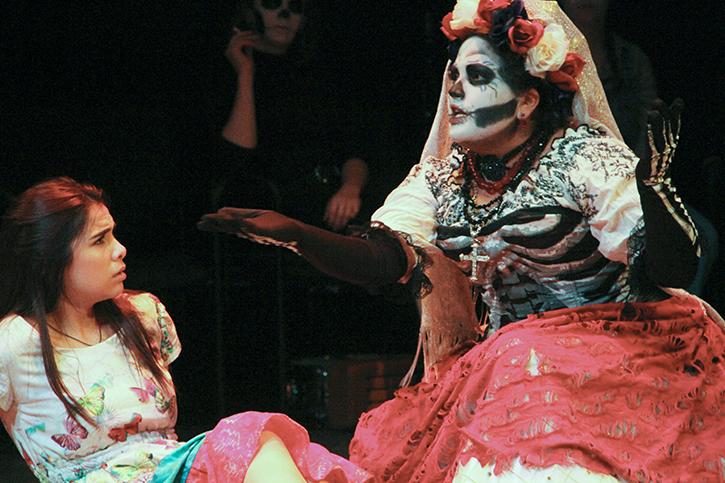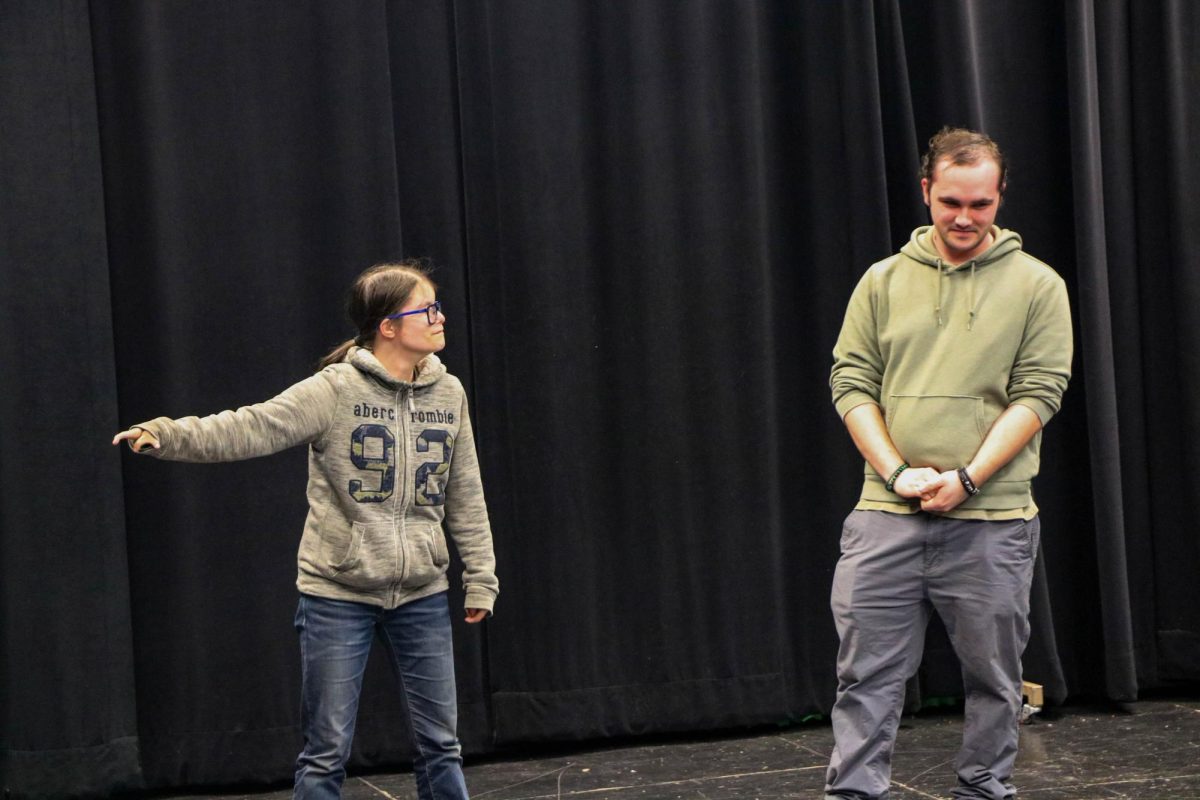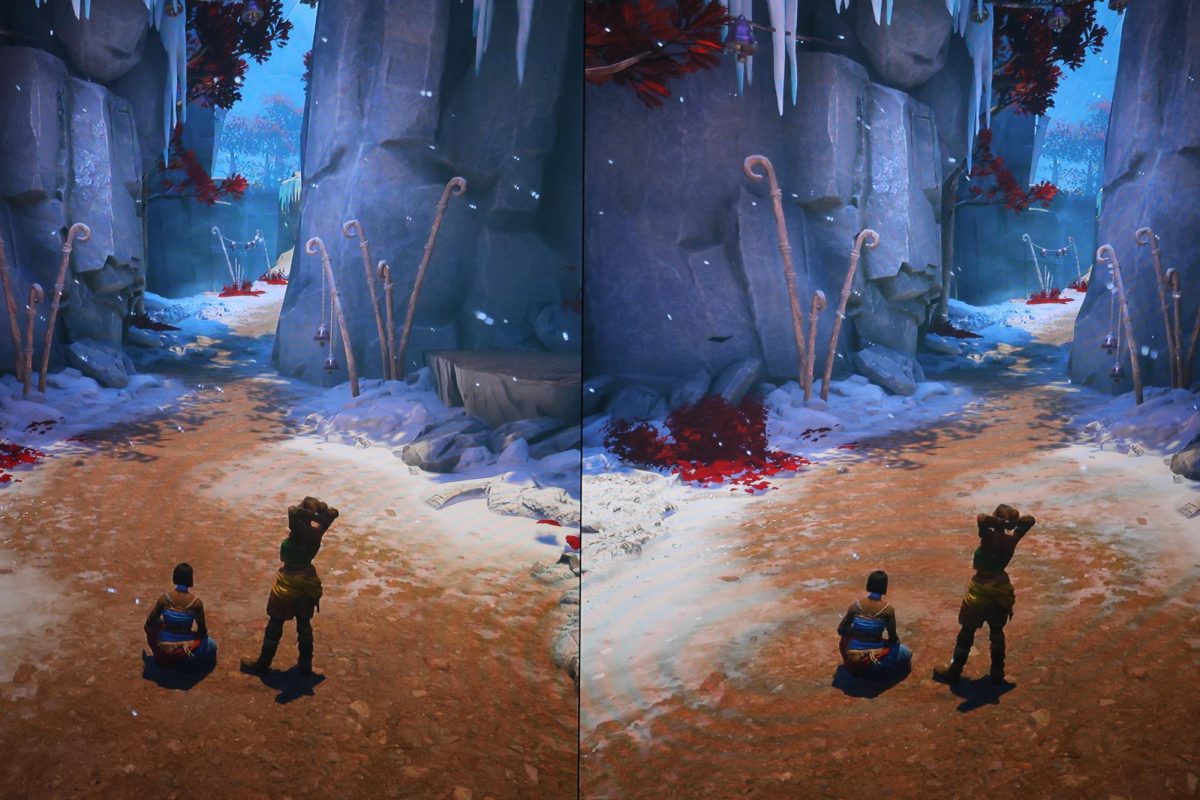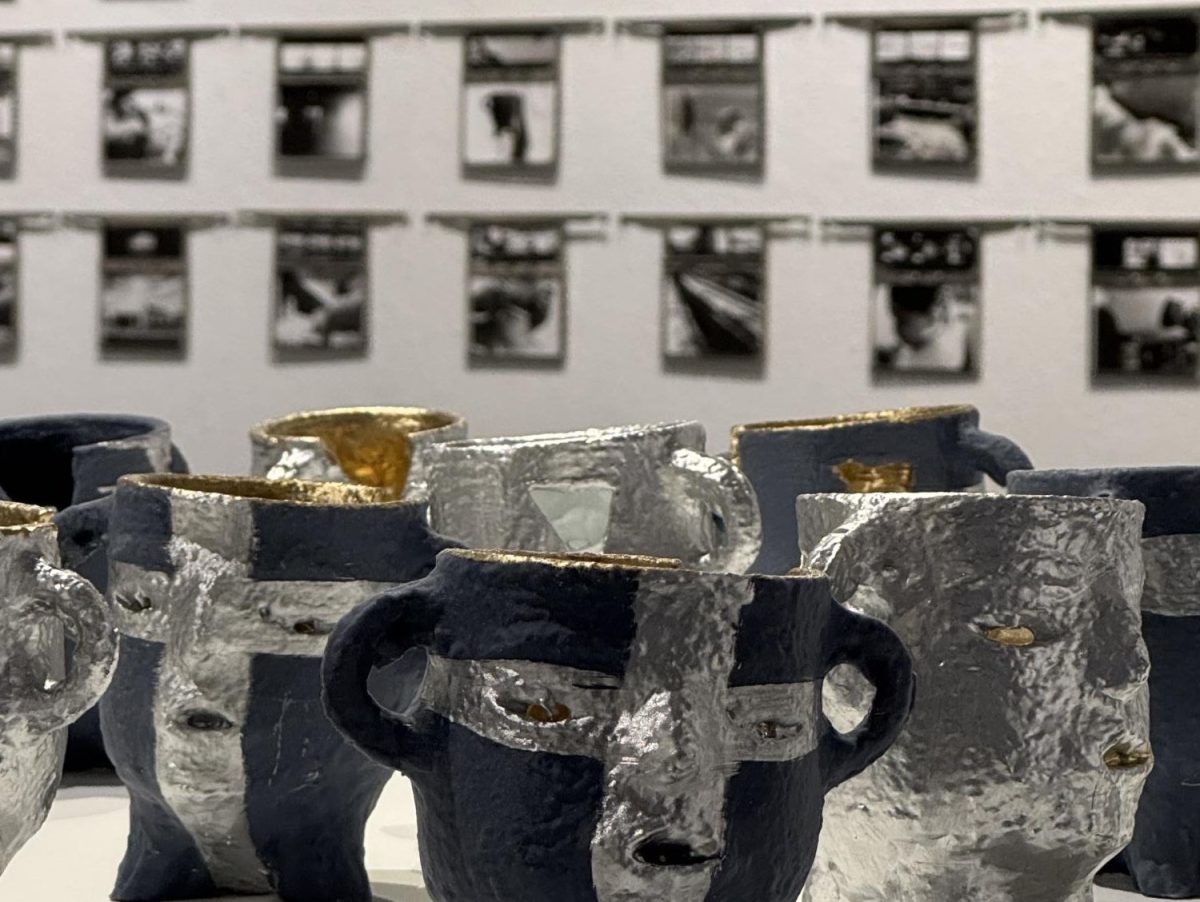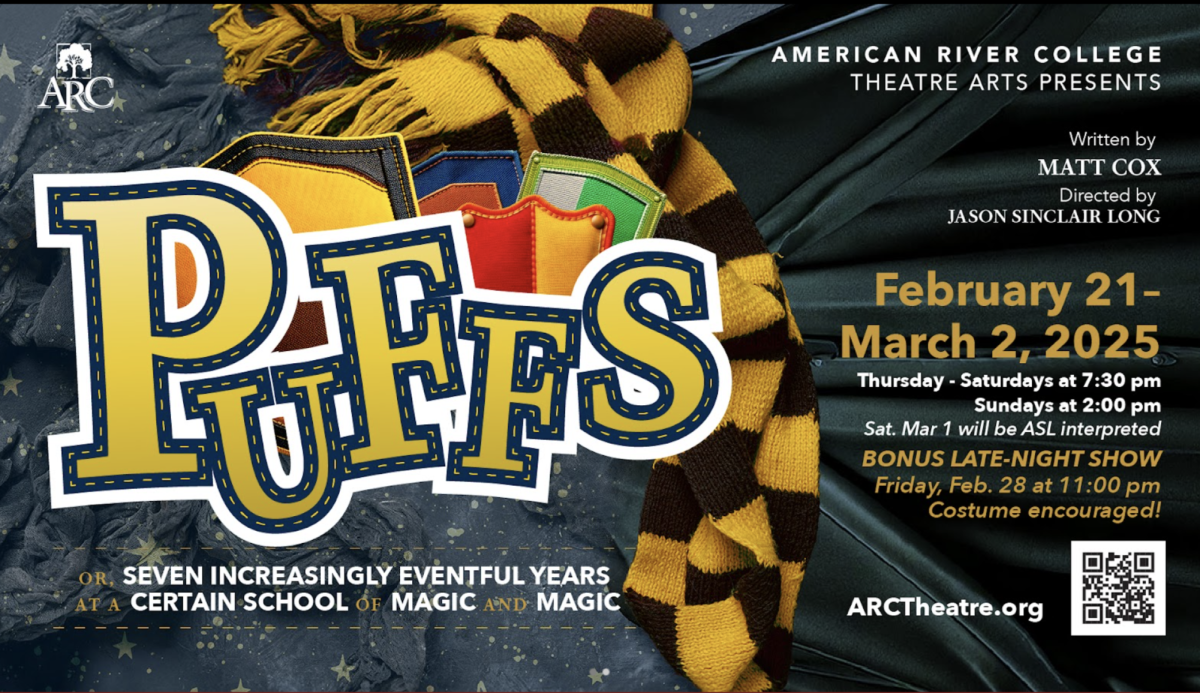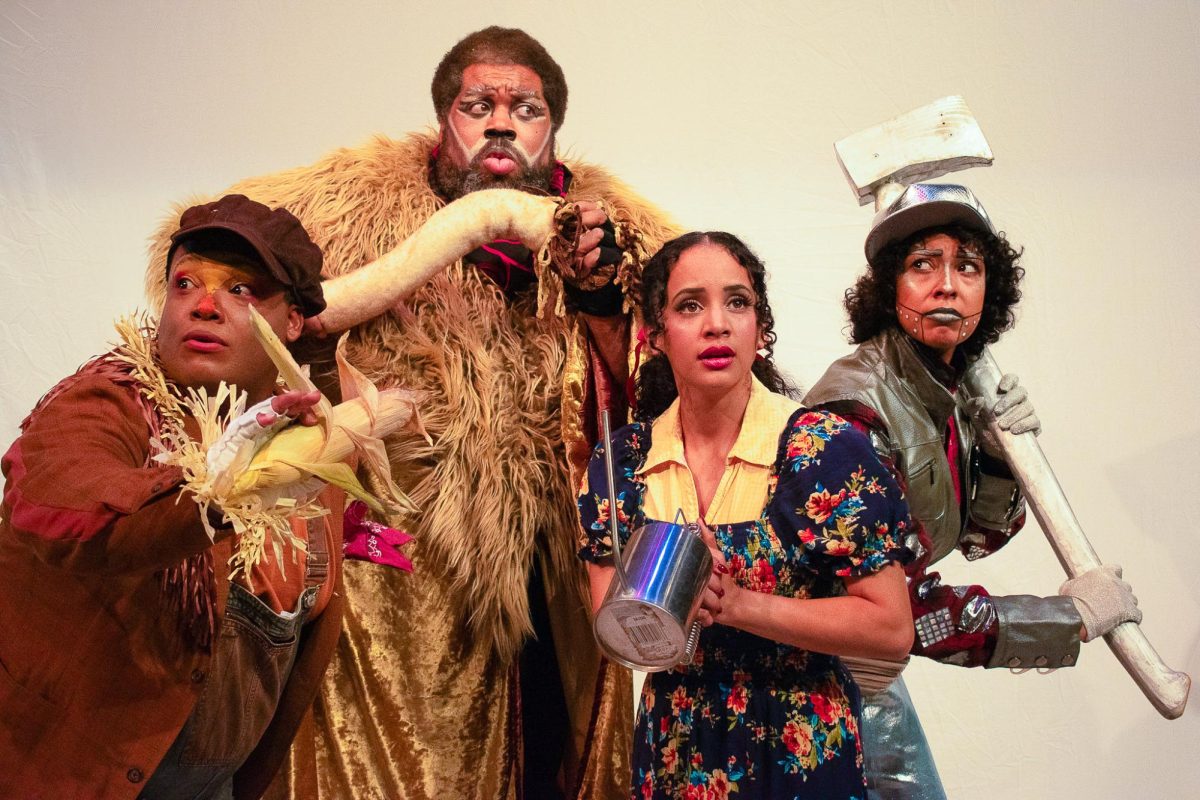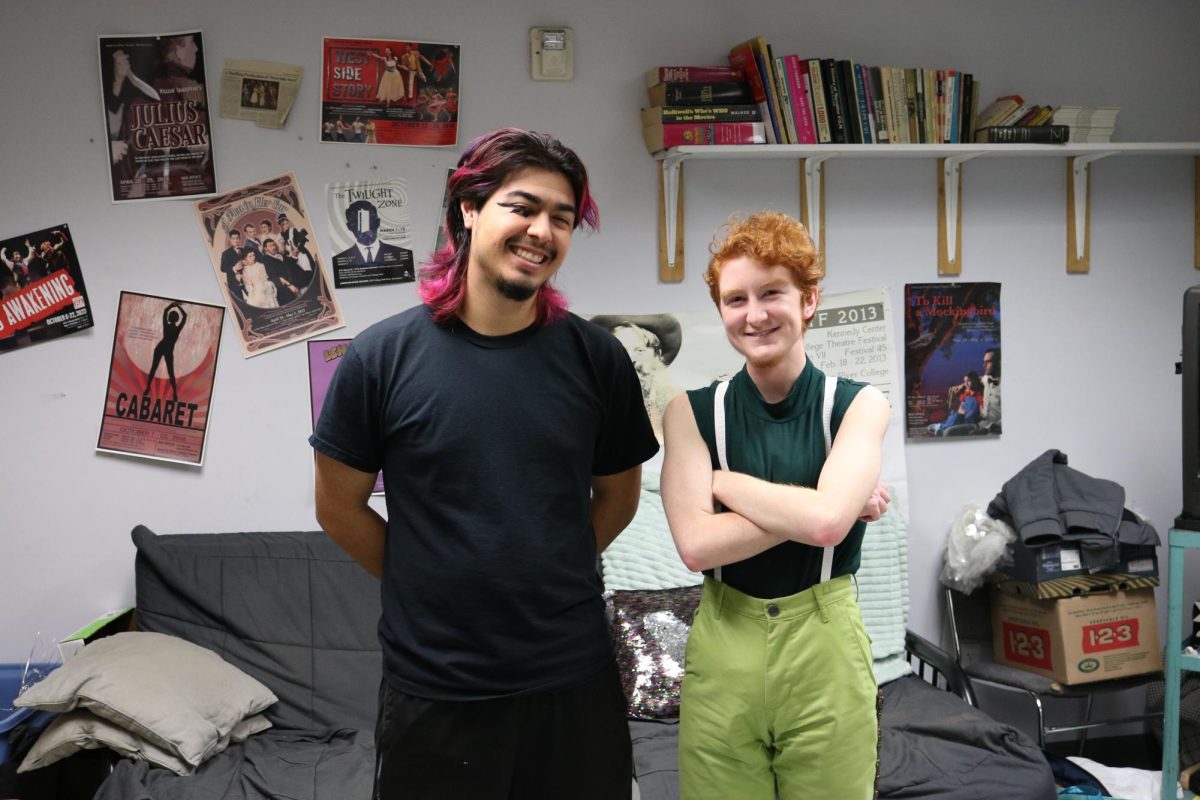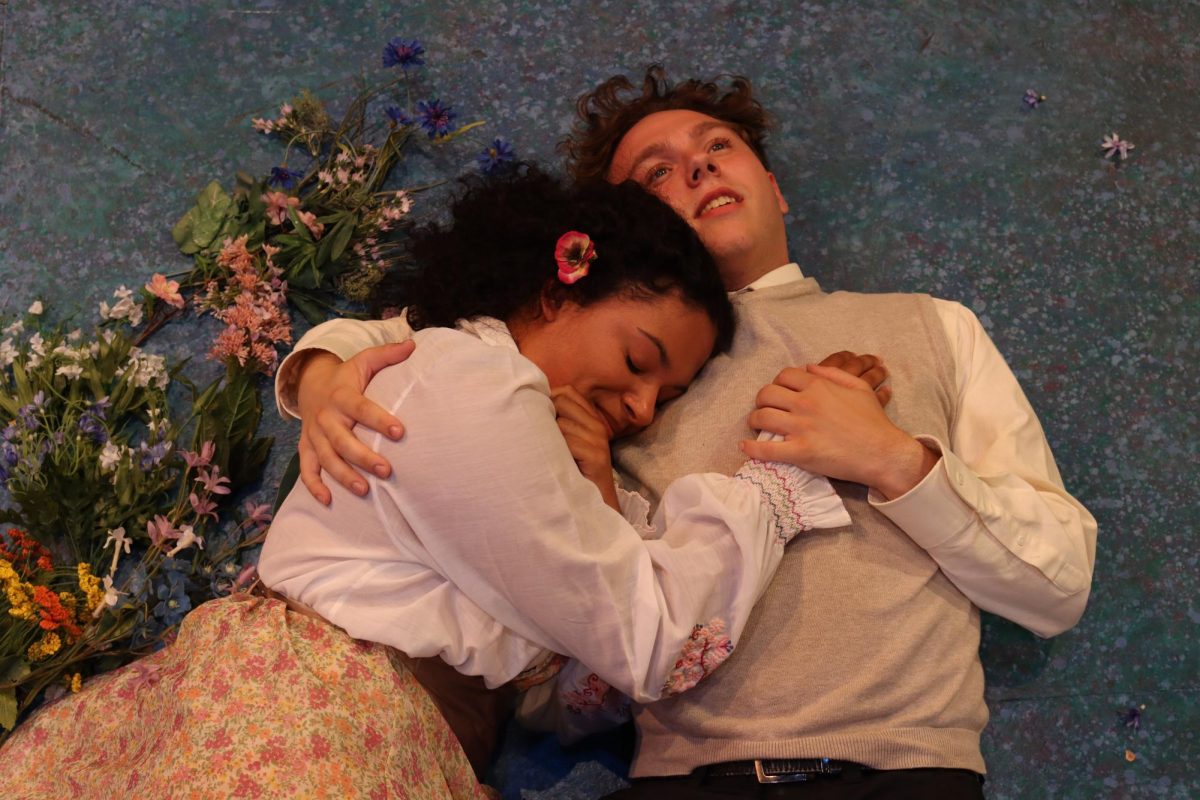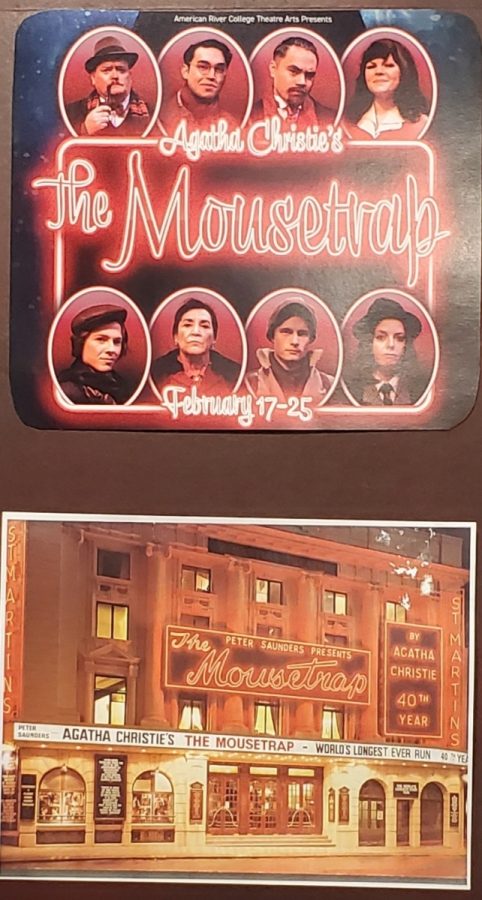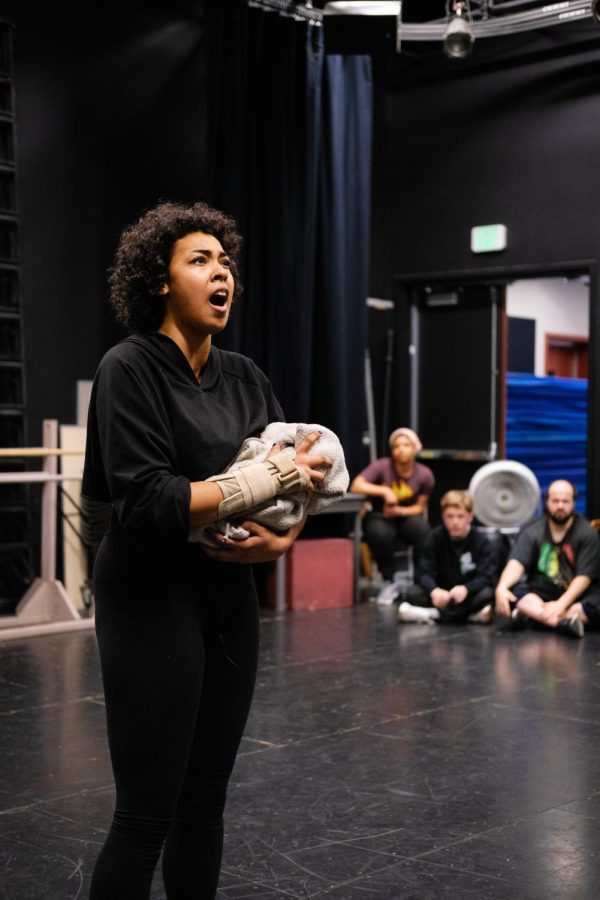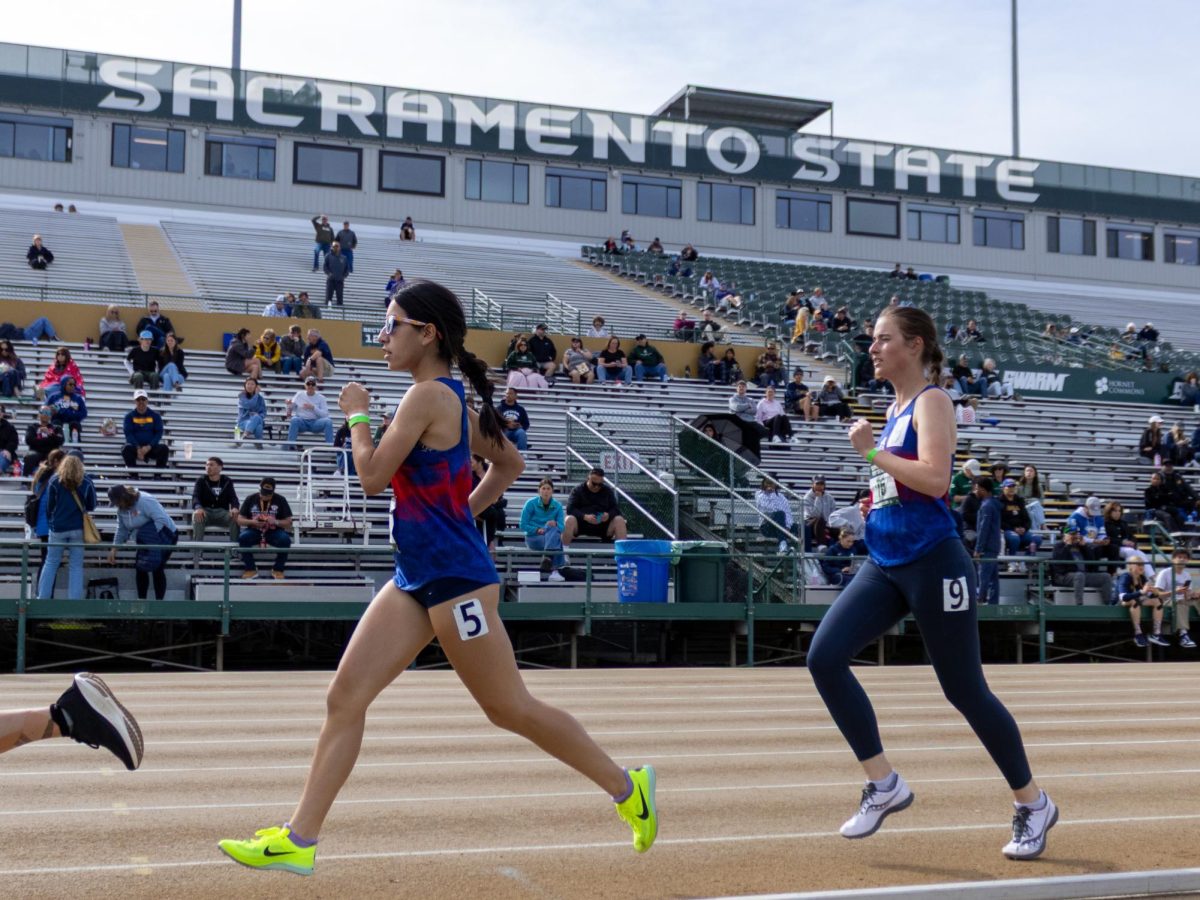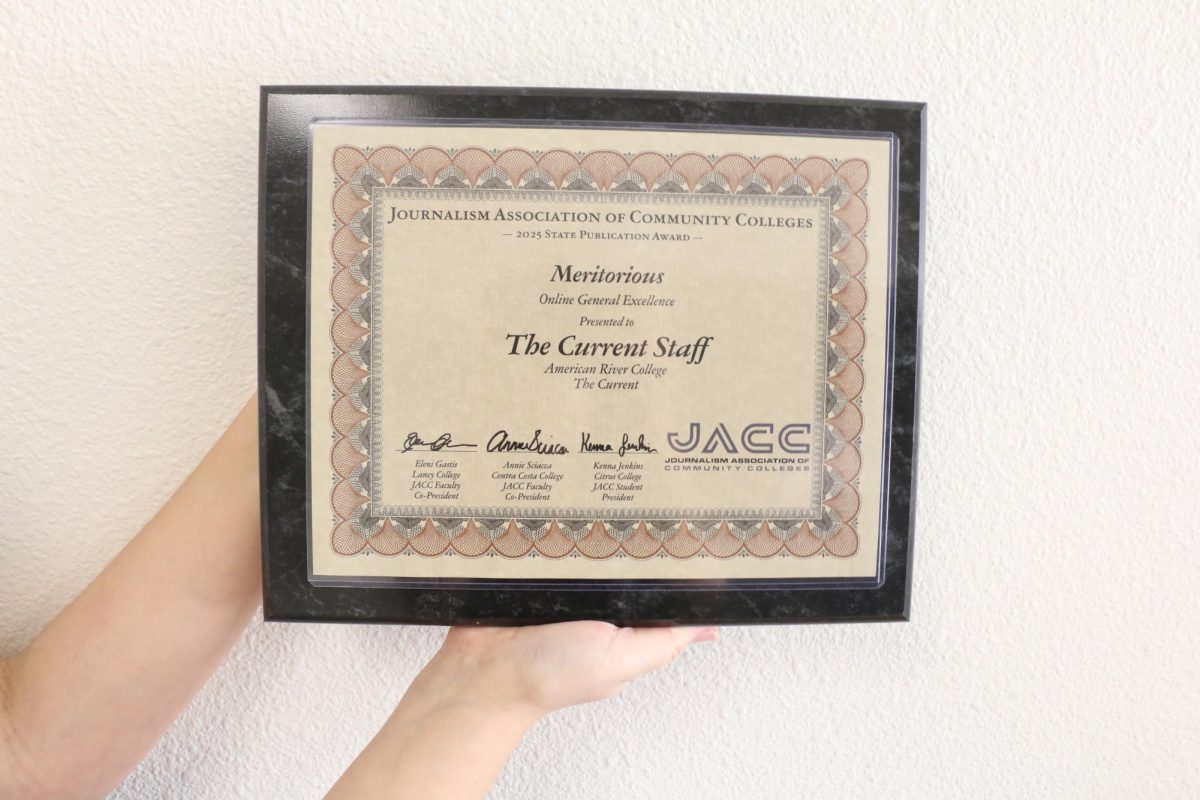American River College theater department’s production of “Skeleton Stories” takes the audience on a journey through a Mexican-inspired underworld that celebrates the Day of the Dead, but the main story is dragged down by the short stories.
“Skeleton Stories,” written by Delondra Williams and directed by Pamela Downs, features a protagonist, Maya, played by McKenzie Lopez, who prays to Santa Muerte, a folk saint who is associated with death, played by Itzin Alpizar, to wish that her dead mother not rest in peace.
“Skeleton Stories” is similar to “The Inferno” by Dante Alighieri, which is an epic poem about a writer’s quest into Hell. However, the strongest comparison the play has to another story is Jim Henson’s “The Labyrinth.”
The type of role that David Bowie plays in “The Labyrinth” is essentially played by two separate characters in “Skeleton Stories,” Santa Muerte and Mitch (played by Charles Souther).
Santa Muerte visits Maya to inform her that she received her wish and that she is being cut piece by piece by Mitch and put back together to only suffer through the torment over and over again.
“Skeleton Stories” leads into individual short stories that are about as eerie as a “Twilight Zone” episode.
One of them includes a woman who has a dysfunctional relationship with her clone, and another involves a woman who sleeps with a man, on the condition that it occur in a dark room where she cannot see him.
“Skeleton Stories” has one story that feels like dead weight. It is about two young women throwing a Halloween party that is crashed by the spirits of those who died.
It seems strange to include a narrative that is centered around Halloween in a production that celebrates Day of the Dead. However, this story features interesting, strange imagery. An actor was used as a door, and one actor sat on the floor and acted as a television set.
The Upright Dead Citizen’s Brigade, a play on popular improv collective Upright Citizen’s brigade, is a collection of ghosts and spirits played by actors who sit among the audience for much of the show. The group do not play a huge role in the play itself, but it was enjoyable see the actors interact with the audience while staying in character.
The costumes are incredibly detailed. Even for the actors who played the skeletons, whose costumes initially appear to be cheesy, look as if their bones are clacking against each other as they dance once the strobe light turns on.
While the play is rough around its edges, “Skeleton Stories” offers a unique experience for audience members with its weird imagery and its tragic story telling.


